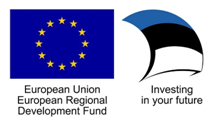Public seminar “Digital Intermediation: Towards Transparent Public Automated Media”
Add to calendar
iCal calendarTarget group: doctoral students and supervisors, researchers and lecturers in media and communication, social sciences and humanities.
Presentations by dr. Jonathon Hutchinson (University of Sydney).
Schedule:
15.30-16.00 Registration
16.00-17.00 Presentation by dr. Jonathon Hutchinson
17.00-17.30 Q &A, Discussion
Additional information:
Katrin Tiidenberg
katrin.tiidenberg@tlu.ee
(content related questions)
Kristel Karu-Kletter
karuklet@tlu.ee
(organisational questions)
The contemporary media ecosystem operates on digital intermediation: it is one that consists of the cultural, economic and expertise capital exchange of cultural intermediation that would otherwise be associated with traditional media, combined with social influencers and large-scale automation. That is, contemporary media is most successful in reaching its desired audience when it engages in digital intermediation that utilises the content production expertise of social influencers who engage the affordances of algorithmic calculations of social media platforms. Youtubers and Instagrammers, for example Zoella, DanTDM, Gigi Hadid or PewDiePie, have all expertly designed their content production around platform characteristics that expose their creative expertise to a large specialist and engaged audience. Bärtl (2018) notes that 85% of all consumed YouTube content is produced by 3% of the top channels, suggesting there is an increasing homogenisation of content diversity across these platforms.
The Australian Competition and Consumer Commission (ACCC) recently announced the insights and impacts of its Digital Platforms Inquiry, where a key issue that emerged was the commercial market dominance of digital platforms. Digital platforms, namely Google and Facebook, have consumed the lion’s share of the news and media production in this country, where a number of academic and independent submissions to the inquiry called for greater transparency of their publishing processes. Similarly, the Cairncross Review (2019) in the UK has recommended an Institute for Public Interest News as a means to level the playfield for public interest items alongside the technology giants such as Alphabet, Facebook, and Apple. It is in this environment where single media producers experience high exposure and impact for their content, while public interest media are struggling to remain relevant. How then, might our public institutions engage digital intermediation to increase the exposure of public interest media?
This presentation will first highlight how successful YouTube and Instagram social influencers operate by defining the function of the Digital First Personality. It will then unpack how automation operates, namely recommender systems, on digital platforms by focussing on the YouTube algorithm through what I argue as digital intermediation. Third it will look at the current state of public institutions engaging digital first personalities and digital intermediation by focussing on the German case study of Funk. Finally this presentation will provide a number of recommendations on how our public institutions can and should be adopting strategies to remain relevant in the contemporary media ecosystem.
Activity is financed by the European Regional Development Fund through the institutional package measure for R&D institutions and higher education institutions (ASTRA project TLU TEE of Tallinn University as a promoter of intelligent lifestyle).
